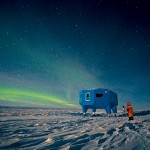
Australian research has uncovered groundwater beneath the Antarctic ice which may increase glacial loss and the rising of ocean levels.
Antarctica preserves Earth’s largest ice sheet, and scientists have been warning for decades that any rapid acceleration in the mass of ice lost to the oceans could lead to sea-level rises that would affect the whole planet.
Now a new study mapping geology underneath the ice has determined that some of the continent’s most dynamic ice streams could increase their vulnerability to rapid ice retreat and ice loss. Scientists from the Universities of Western Australia and Tasmania, along with the CSIRO, have been looking for sedimentary basins beneath the ice – low-lying areas that can contain lots of groundwater.
When glaciers retreat, these basins can discharge groundwater under the ice, and that water can increase the rate at which ice is lost. Such basal conditions are critical to predicting future ice loss, says the study.
While satellite observations show a continuous ice loss over the past four decades in both Western and East Antarctica, predictions of future events remain highly uncertain because of the difficulty in identifying critical thresholds at which heavy ice loss will occur. These thresholds are often associated with changing basal conditions, but any systematic understanding of basins has until now been limited by the local nature of previous studies and inconsistent mapping between them.
The scientists have now developed a sedimentary-basin probability map for the whole of Antarctica, using machine-learning trained on the current understanding of Antarctic sedimentary basin distributions.
The research found sedimentary basins in some of Antarctica’s most dynamic ice-sheet catchments, including Wilkes Land and the Recovery regions in East Antarctica, and especially the Thwaites and Pine Island glacier in Western Antarctica, both of which were found to possess sedimentary basins in their upper catchments. Pine Island is Antarctica’s fastest melting glacier, responsible for about 25% of Antarctica’s ice loss.






